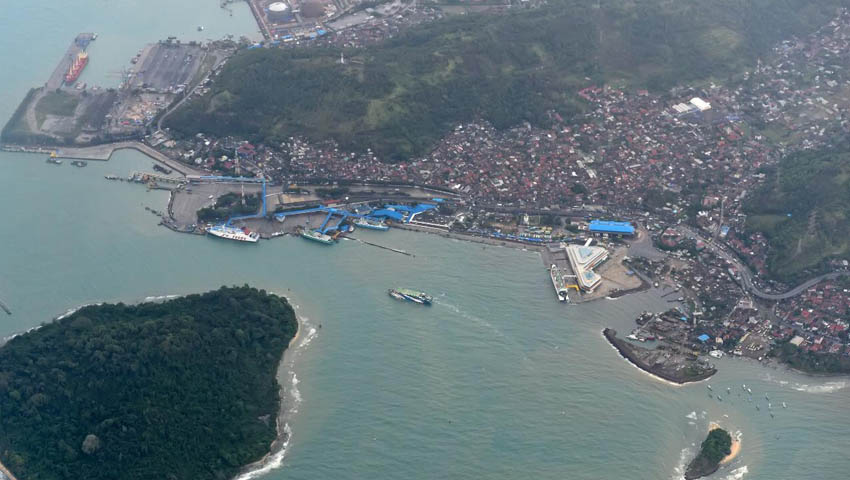The Straits of Sunda and Lombok provide deep water alternatives to the Straits of Malacca within close proximity of the Australian mainland, reinforcing the maritime dominated reality of the Indo-Pacific – more than this, both Sunda and Lombok are pivotal pieces in the long vaunted ‘sea-air gap’.
For Australia, the Straits of Malacca and Singapore in particular are responsible for the vast majority of the nation's liquid energy supplies, placing the waterway at the centre of the nation's national security engagement with the Indo-Pacific. On average, approximately 100,000 vessels pass through the straits annually, accounting for about a quarter of the world's traded goods, including the liquid and gas energy resources essential for the enduring success of the regional and, more broadly, the global economy.
While the 890-kilometre stretch of water between the Malay Peninsula and the Indonesian island of Sumatra that forms the Straits of Malacca serves as one of the major geo-political, economic and strategically important waterways in the Indo-Pacific, the geographic confines of the narrow waterway limits its capacity.
Enter the Straits of Lombok and Sunda – strategically critical waterways in the Indonesian archipelago that present viable alternatives for maritime access to the economies of China, Thailand, Indonesia, Vietnam, Singapore, Japan, Taiwan and South Korea via the South China Sea, through which US$5 trillion worth of trade flows annually.
Lombok – Deep water passage
At its narrowest point – the southern approach – the Lombok Strait has a width of approximately 20 kilometres between the islands of Lombok and the island of Nusa Penida, expanding to 40-kilometres across at the wider, northern approach to the channel, which is 60 kilometres long in contrast to the 890-kilometre long, narrow stretch of water in the Straits of Malacca.
Lombok also enjoys a dramatically deeper passage, with a maximum depth of 250-metres enabling post-Malaccamax vessels – namely large bulk ore and liquid energy carrying vessels that are unable to traverse the narrow, shallow waterways of the Straits of Malacca – to access the growing markets of south-east and western Asian powerhouses.
For Australia, the Lombok Strait serves as an invaluable maritime corridor for the nation's export goods – namely resources, energy and agricultural produce – combined with critical energy supplies and consumer goods from Asia and Europe, meaning that Lombok is one of three economic and strategically critical waterways intrinsically linked to Australia's long-term economic and strategic national security.
The 'sea-air gap' and Sunda Strait
In contrast to Lombok, Sunda is relatively narrow with a minimum width of 24 kilometres and shallow depth in the eastern approach of 20 metres, combined with a series of channel islands and strong currents, limiting the ability of large vessels to traverse. However, the waterway served as the site of a major naval battle during the Second World War – the Battle of the Sunda Strait in 1942.
This battle saw Australian and American warships clash with an amphibious task group of the Imperial Japanese Navy preparing to invade the island of Java, which would further expose the Australian mainland – namely northern Western Australia and the Northern Territory – to potential Japanese air and sea attacks, or invasion.
Controlling the choke points
Fast-forward to contemporary times – the geographic confines of these major waterways presents Australia with the opportunity to rapidly develop a complementary force structure and doctrine for the 'joint force' ADF to effectively establish and maintain control of such narrow waterways, in conjunction with regional allies, to the benefit of the Indo-Pacific order.
Further complicating the strategic environment is the increasing proliferation of highly capable conventional submarines, like the Russian Kilo Class, operated by many nations, including China, and the variants operated by nations throughout the Indo-Pacific – Singapore's existing Archer and Challenger Class submarines and French Scorpene Class – combined with larger nuclear attack submarines. All serve as key asymmetric force multipliers capable of directly influencing the tactical and strategic calculations of nations dependent on the critical maritime choke points in the region.
Additionally, while submarines represent the high-end of the maritime asymmetric warfare calculations, fast, nimble and light torpedo and anti-ship missile carrying vessels supported by dedicated or pseudo-motherships are potent, cost-effective ways of establishing sea control while also providing close-in support for larger, power projection focused naval task groups.
Australia’s security and prosperity are directly influenced by the stability and prosperity of the Indo-Pacific, meaning Australia must be directly engaged as both a benefactor and leader in all matters related to strategic, economic and political security, serving as either a replacement or complementary force to the role played by the US – should the US commitment or capacity be limited.
The nation's response can no longer be an "all or nothing" approach – rather it requires nuance and understanding. In particular, it requires an understanding that Australia will be required to present a more conventional force projection capability, supported by a fleet of advanced, high-speed and adaptable asymmetric sea control capabilities – combining doctrine and technology to enhance the independent and interoperable tactical and strategic capabilities of the RAN in particular.
Additionally, the Australian Army will also serve a unique and powerful role in enhancing the security and stability of these waterways through the development of a networked, 'hardened' army capable of supporting uncontested Australian and allied access to these economic and strategically vital waterways.
The nation is defined by its relationship with the region, with access to the growing economies and to strategic sea-lines-of-communication supporting over 90 per cent of global trade, a result of the cost effective and reliable nature of sea transport. Indo-Pacific Asia is at the epicentre of the global maritime trade, with about US$5 trillion worth of trade flowing through the SCS and the strategic waterways and choke points of south-east Asia annually.
Get involved with the discussion and let us know your thoughts in the comments section below, or get in touch at








